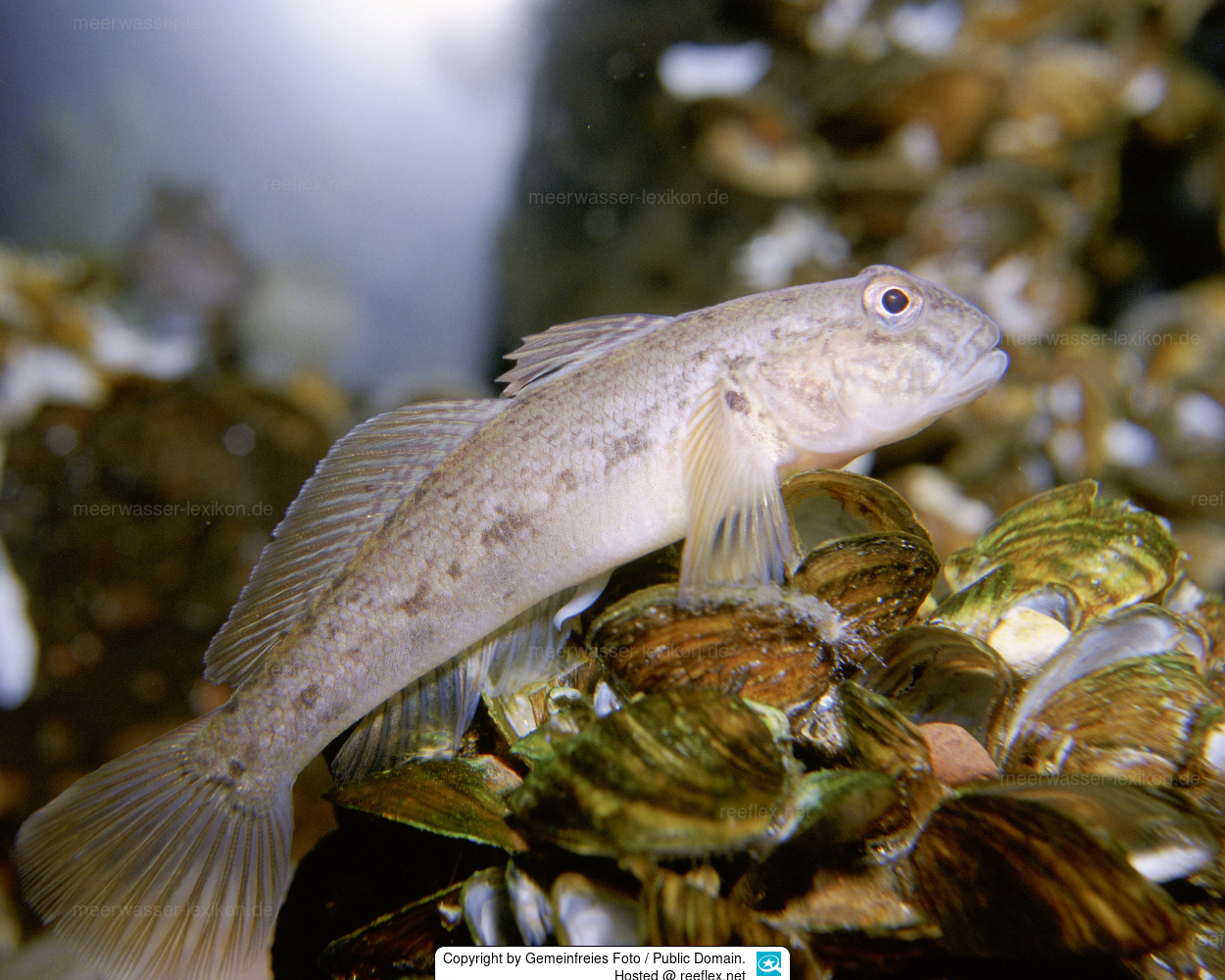Info
The blackmouth goby is a highly invasive species that does well in freshwater, brackish water and saltwater habitats.
Ballast water (see Sapota and Skóra 2005) introduced the goby to the Baltic Sea as early as the 1990s and it has invaded nearly all of the littoral states.
Occurrences on the east coast of the USA are also due to human introductions.
The species is considered a potential pest because of its severe impact on mussel stocks.
During the mating season, the otherwise inconspicuous males take on a rich black coloration.
Synonyms:
Apollonia melanostoma (Pallas, 1814)
Gobius affinis Eichwald, 1831
Gobius cephalarges Pallas, 1814
Gobius chilo Pallas, 1814
Gobius exanthematosus Pallas, 1814
Gobius grossholzii Steindachner, 1894
Gobius lugens Nordmann, 1840
Gobius melanio Pallas, 1814
Gobius melanostomus Pallas, 1814
Gobius sulcatus Eichwald, 1831
Gobius virescens Pallas, 1814
Neogobius cephalarges (Pallas, 1814)
Neogobius cephalarges cephalarges (Pallas, 1814)
Neogobius melanostomus affinis (Eichwald, 1831)
Ponticola cephalarges (Pallas, 1814)
Jumping guard
A jumping guard prevents (nocturnal) fish from jumping out.
Wrasses, blennies, hawkfishs and gobies jump out of an unprotected tank in fright if their night rest is disturbed, unfortunately these jumpers are found dried up in the morning on carpets, glass edges or later behind the tank.
https://www.korallenriff.de/en/article/1925_5_Jump_Protection_Solutions_for_Fish_in_the_Aquarium__5_Net_Covers.html
A small night light also helps, as it provides the fish with a means of orientation in the dark!
Ballast water (see Sapota and Skóra 2005) introduced the goby to the Baltic Sea as early as the 1990s and it has invaded nearly all of the littoral states.
Occurrences on the east coast of the USA are also due to human introductions.
The species is considered a potential pest because of its severe impact on mussel stocks.
During the mating season, the otherwise inconspicuous males take on a rich black coloration.
Synonyms:
Apollonia melanostoma (Pallas, 1814)
Gobius affinis Eichwald, 1831
Gobius cephalarges Pallas, 1814
Gobius chilo Pallas, 1814
Gobius exanthematosus Pallas, 1814
Gobius grossholzii Steindachner, 1894
Gobius lugens Nordmann, 1840
Gobius melanio Pallas, 1814
Gobius melanostomus Pallas, 1814
Gobius sulcatus Eichwald, 1831
Gobius virescens Pallas, 1814
Neogobius cephalarges (Pallas, 1814)
Neogobius cephalarges cephalarges (Pallas, 1814)
Neogobius melanostomus affinis (Eichwald, 1831)
Ponticola cephalarges (Pallas, 1814)
Jumping guard
A jumping guard prevents (nocturnal) fish from jumping out.
Wrasses, blennies, hawkfishs and gobies jump out of an unprotected tank in fright if their night rest is disturbed, unfortunately these jumpers are found dried up in the morning on carpets, glass edges or later behind the tank.
https://www.korallenriff.de/en/article/1925_5_Jump_Protection_Solutions_for_Fish_in_the_Aquarium__5_Net_Covers.html
A small night light also helps, as it provides the fish with a means of orientation in the dark!







 Gemeinfreies Foto / Public Domain
Gemeinfreies Foto / Public Domain


